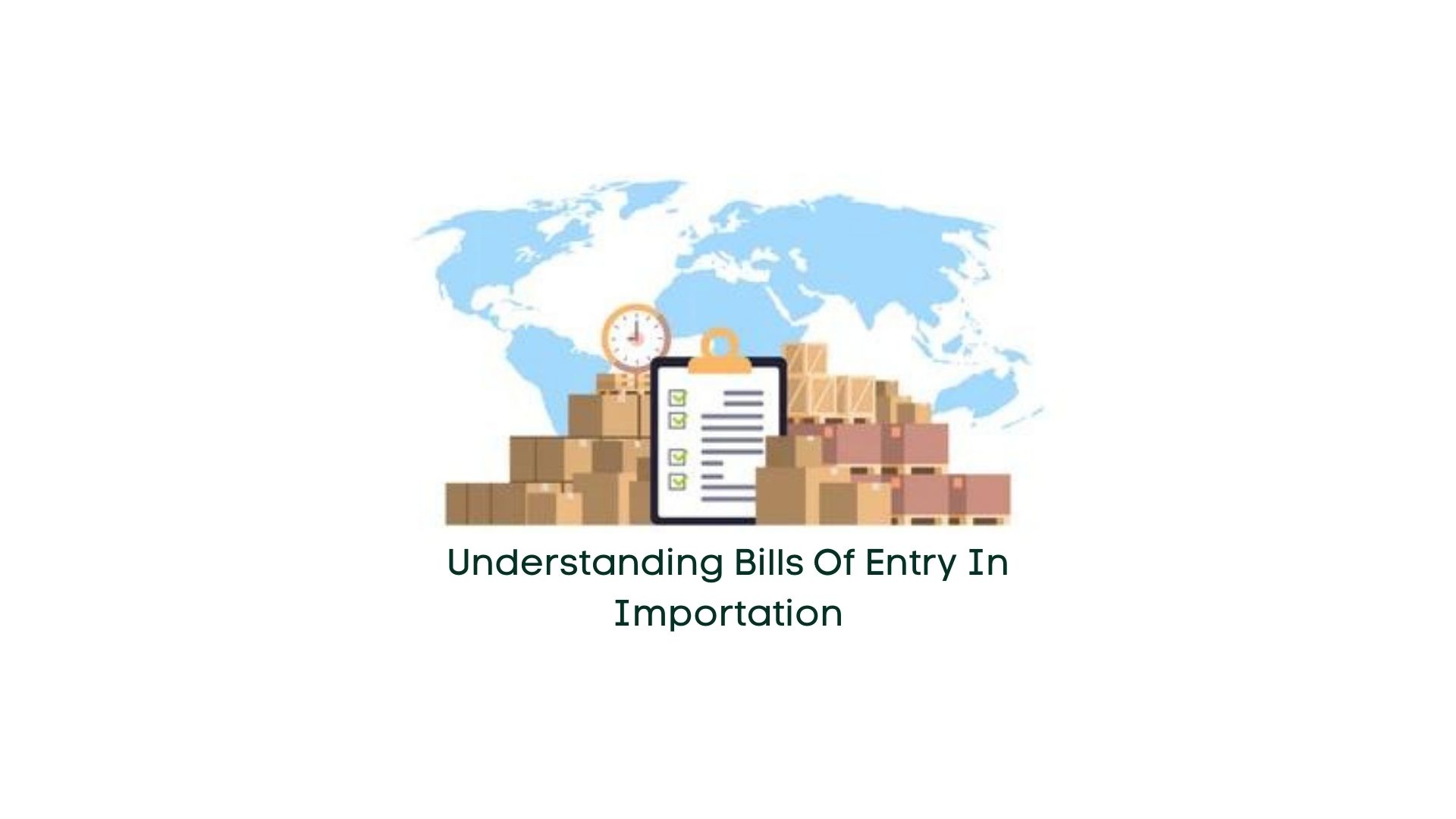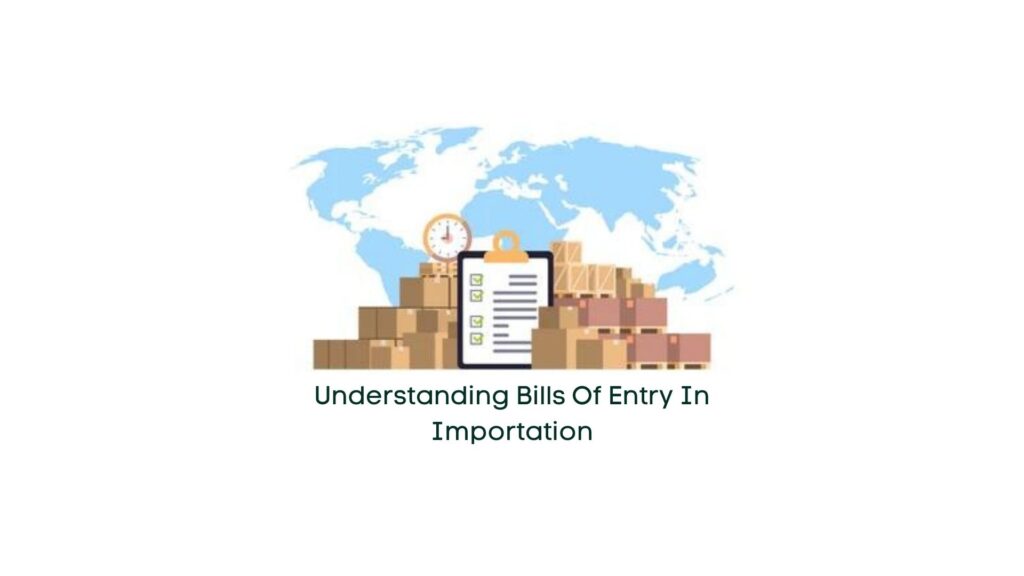
01 Mar Understanding Bills of Entry in Importation

Introduction:
In the realm of importation, Bills of Entry play a pivotal role in facilitating the movement of goods across borders. This document meticulously outlines the specifics of imported goods, serving as the basis for customs authorities to ascertain the requisite import duties. Without a duly filled Bill of Entry, the clearance of goods from the customs office becomes an arduous task, necessitating its completion alongside other mandatory procedures.
Importance of Bills of Entry:
The importer bears the responsibility of furnishing the Bill of Entry, accompanied by essential documents such as the bill of lading and port trust dues receipt, subsequent to the payment of import duty to the shipping company. This ensures the seamless release of the goods from customs custody.
Preparation and Documentation:
The preparation of the Bill of Entry entails declaring crucial details including the value, quantity, and description of the imported goods. Customs authorities may demand additional documentation such as the exporter’s invoice, broker’s note, and insurance policy to verify the accuracy of the declared values.
Classification of Goods:
Goods imported are typically categorized into three classifications:
- Free Goods: These items are exempt from customs duties.
- Goods for Home Consumption: Imported for personal or domestic use.
- Bonded Goods: Subject to customs duty, these goods are kept in bond until the duty is settled.
Contents of Bill of Entry:
The contents of a Bill of Entry encompass vital information such as the importer and exporter’s details, import license number, port of clearance, description and value of goods, as well as the applicable import duty rates.
GST Bills of Entry:
In the context of India, GST Bills of Entry serve as declarations filled by importers or their clearing agents with the Customs department. To initiate customs clearance procedures, the Bill of Entry must be submitted along with requisite documents prior to the arrival of goods. Failure to comply within the stipulated timeframe may lead to potential consequences such as the auctioning of the cargo by relevant authorities.
Import Procedures:
Import procedures encompass a series of steps including the arrival of goods, lodging procedures, customs clearance, and duty payment. Various types of Bills of Entry procedures exist in India, including those for home consumption, warehousing, and ex-bond scenarios, each governed by specific regulations delineated in the Indian Customs Act.
Conclusion:
Understanding these procedures is essential for importers to navigate the complexities of international trade seamlessly.


No Comments